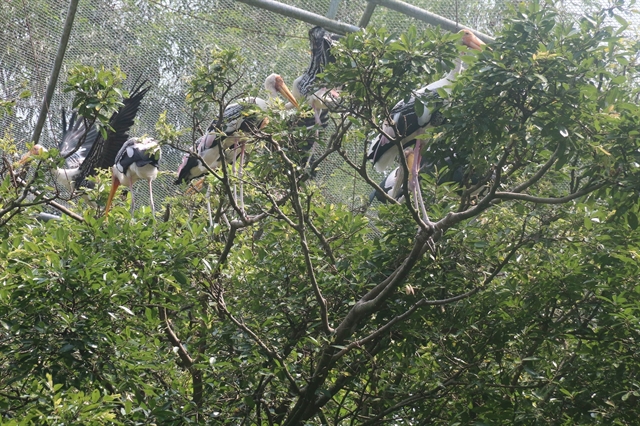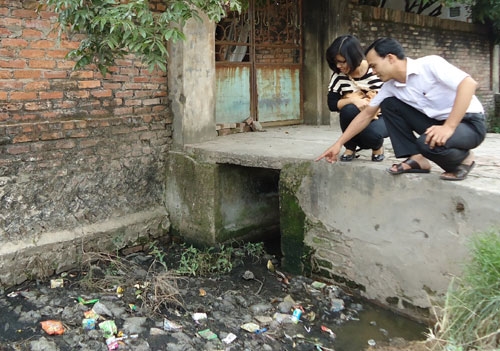 Environment
Environment

Pollution levels are adversely affecting local residents’ health and the long-term economic development of a traditional handicraft village located about 70km from Hà Nội, a senior official said.
 |
| A high volume of waste is discharged every day in Trà Lâm Village, Trí Quả Commune, as a result of soya curd-making and pig breeding.— Photo baobacninh.vn |
BẮC NINH — Pollution levels are adversely affecting local residents’ health and the long-term economic development of a traditional handicraft village located about 70km from Hà Nội, a senior official said.
A high volume of waste is discharged every day in Trà Lâm Village, Trí Quả Commune, as a result of soya curd-making and pig breeding.
The commune’s People’s Committee chairman, Dương Văn Phao, said the waste treatment systems in most handicraft households fail to meet national standards.
To make matters worse, waste is discharged directly into canals around the village, Phao said.
Local resident Trần Văn Thụy, 65, said, “On top of the irrigation canal system, the air quality has become badly polluted because of fire pits. We have been living in pollution for 10 years.”
“A considerable amount of land is uncultivated because of the polluted irrigation canal system. Local residents have suffered from respiratory and eye diseases.”
In Trà Lâm Village, 300 of the 500 households are involved in soya curd production.
Soya curd producers, a traditional job that has existed in the village for about 300 years, produce 18-20 tonnes of soya per day on average, Trí Quả Commune People’s Committee reported.
An official from the communal People’s Committee said the handicraft village has made positive changes, but it is still dealing with environmental pollution.
Machinery has been used on the soya curd production line since 2010 and is now developing rapidly, with 90 per cent of the soy curd-producing households reportedly using it.
Phao said both the output and quality of Trà Lâm soya curds have improved, helping local residents increase their income.
Machinery has helped increase the output of soya curd by three to four times.
“Now, we don’t need to wake up early to prepare soya for making cakes each day,” said Nguyễn Văn Phúc, a local producer. “My family of two labourers can process 60kg of soya per day - three times more than making it by hand.”
“We earn VNĐ200,000 (US$9) per day, which is high compared to the average income in rural Việt Nam.”
Most soya curd producers also breed pigs and use soya bean residue to feed the animals.
On average, a household breeds 10 to 30 pigs, depending on their soya bean production scale. The total number of pigs is 3,000 in the village, which has a population of 2,000.
Communal authorities have implemented some methods to reduce pollution.
Every year, the commune invests tens of millions of đồng into sanitation for canal systems, Phao said.
Communal authorities also helped 100 soya bean-producing households to build biogas plants, which are waste-treating facilities aimed at diminishing pollution.
“The volume of waste discharged every day is too large and exceeds our capacity,” Thao said.
He said the combination of production and environmental protection is the only way to help the handicraft village maintain its sustainable development.
Bắc Ninh Province now has 61 handicraft villages, ranking among the top provinces in northern Việt Nam for the industry. A Bắc Ninh Provincial Department of Natural Resources and Environment survey on environmental pollution last year revealed that the province was suffering from alarming levels of air, water, noise and soil pollution. — VNS




